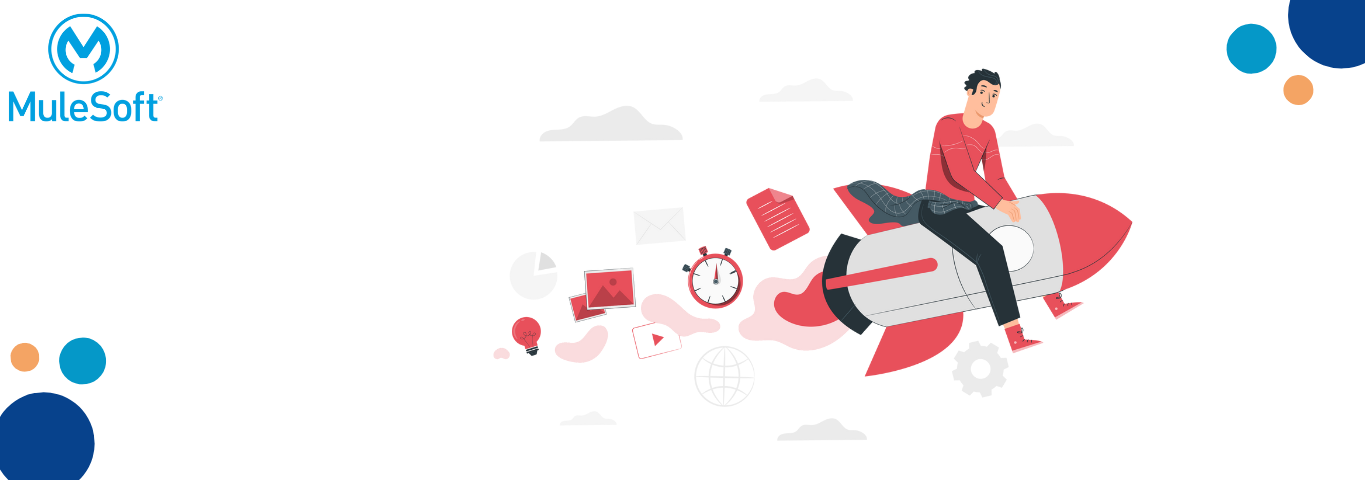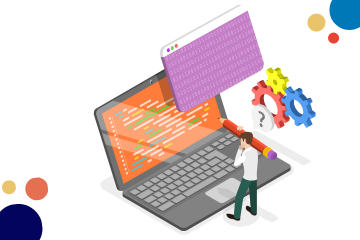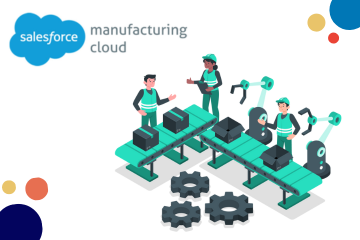In the world of digital transformation, the need for seamless connectivity and efficient data integration has become of utmost importance.
MuleSoft, a robust integration platform, has emerged as a key player, enabling organizations to overcome the complexities of connecting diverse applications, systems, and data sources.
Moreover, when it comes to integrating SaaS and enterprise applications on-premises and in the cloud, this is the most popular integration platform. Before we explore MuleSoft further, let us review the basics of integration.
What is an API?
Application Programming Interface, or API for short, is a collection of rules that permits interactivity and communication between various software programs. It is like a piece of code that establishes an access point to a system.
It acts as a middleman that receives the requests from the outside, securely and safely passes them to the system, and then reverts the response. During this process, the system remains hidden.
The advantage of API is that it does not require an understanding of how the system works to process the requests.
What type of API is MuleSoft?
The Anypoint Platform from MuleSoft is made to support the designing and administration of RESTful APIs (Representational State Transfer), but it also supports other integration styles that can be used to interact with various systems and data sources, including SOAP (Simple Object Access Protocol), and others.
SOAP V/S REST
Function | SOAP | REST |
Protocol | SOAP relies on XML for structuring messages, ensuring a strict format for communication. | REST uses the lightweight and flexible JSON format for data interchange. |
Communication | SOAP requires higher bandwidth and resources due to its XML-based nature, making it more resource-intensive. | REST is lightweight and efficient, conserving bandwidth and resources. |
State | SOAP maintains transaction state, remembering the context of each communication. | REST follows a stateless architecture, ensuring scalability by not storing client information between requests. |
Usage | SOAP is often chosen for enterprise-level applications that require high security and reliability. | REST is widely adopted in web and mobile applications for its simplicity, speed, and flexibility in integration. |
How does MuleSoft work?
MuleSoft provides many numbers of pre-built APIs for various applications and systems. Moreover, we can instantly get a modern method to communicate with your old systems without having to understand how they work by adding an API in front of them.
What is MuleSofts Anypoint Platform?
MuleSofts Anypoint Platform is a single solution that provides tools for designing, building, and managing APIs, as well as orchestrating the flow of data between various systems.
Further, it supports a wide range of connectors and adapters to integrate with diverse applications, databases, and services. It simplifies and accelerates the integration process, allowing organizations to create a connected and interoperable IT landscape. Its important components are as follows:
- Anypoint Design Center
- Anypoint Management Center
- Runtime engine & services
- Anypoint Exchange
- API-led connectivity
- Application Network
- DataWeave
Anypoint Design Center
It includes all the web-based tools that are required by MuleSoft developers to design and create API specifications and fragments. The platform supports real-time collaboration, enabling multiple team members to work together, make annotations, and collectively refine API specifications. Further, with visual data mapping capabilities, the Design Center enhances the efficiency of the design process and ensures that all stakeholders are aligned during API development.
Anypoint Management Center:
Anypoint Management Center is the central hub for managing and facilitating integrations created using MuleSoft. It offers features for monitoring, analyzing, and controlling the flow of data within the integration process. This management center empowers administrators and developers with tools to ensure the reliability, security, and scalability of their integrations.
- Runtime Manager allows the deployment & management of applications followed by monitoring their performance.
- API Manager enables security policies to limit access and unlock data through API gateways.
- Analytics gives performance metrics and visibility into API traffic.
Runtime Engine & Services:
The Runtime engine is the execution engine that powers MuleSoft applications. It takes the integration flows designed in Anypoint Studio and executes them in a runtime environment. Alongside the engine, various services such as message processors, transformers, and connectors work together to facilitate the seamless flow of data between connected systems.
API-led Connectivity:
API-led Connectivity is an architectural approach that organizes integrations around reusable and discoverable APIs. It comprises three layers:
System APIs
- Purpose: Exposes the core functionalities of a system.
- Example: Database APIs providing access to underlying data systems.
- Characteristics: Forms the foundation, exposing core business functions, and is often leveraged by both Process and Experience APIs.
Process APIs:
- Purpose: Facilitating and coordinating multiple systems to fulfill specific business processes.
- Example: Workflow APIs that manage business processes.
- Characteristics: Sits in the middle layer, responsible for connecting various systems, optimizing business processes, and maintaining a cohesive workflow.
Experience APIs:
- Purpose: Focuses on delivering seamless experiences to end-users.
- Example: Web and Mobile APIs that directly interact with users.
- Characteristics: User-centric, tailored for specific audience needs, and often the entry point for external consumers.
Application Network:
The Application Network is the interconnected ecosystem of applications, data, and devices facilitated by MuleSofs API-led Connectivity. It represents the structured and organized network where APIs play a pivotal role in enabling different components to interact seamlessly. The Application Network promotes flexibility, allowing organizations to adapt quickly to changing business requirements.
DataWeave:
DataWeave is MuleSofts powerful and expressive language for transforming data between different formats. It allows developers to manipulate and convert data seamlessly within integration flows. With features like scripting, functions, and pattern matching, DataWeave ensures that data is transformed accurately and efficiently, promoting interoperability across diverse systems and applications.
What are the Benefits of Anypoint Platform?
Anypoint Platform brings several benefits to your integration projects:
Easy & Quick Start
MuleSofts pre-built assets and connectors make it easy to swiftly kick-start integration projects. It establishes a solid foundation, and the ability to reuse existing APIs reduces the time needed for future projects.
Automated Security
Anypoint Platform prioritizes security throughout the API lifecycle. It adheres to standard security and logging requirements, ensuring consistent application of security measures and policies to all APIs. This streamlines the design, development, and deployment of fully secure APIs.
Reliable Operations
With built-in reliability, scalability, and visibility, Anypoint Platform ensures the stability of our services. Monitoring, Analytics, and Visualizer components help us understand our infrastructures state, making it easier to make informed operational decisions based on runtime performance metrics. These tools minimize downtime by facilitating quick problem identification and resolution.
Adaptability and Futureproofing
Anypoint Platform offers a flexible, plug-and-play architecture, providing a future-proof foundation. Its versatility enables us to adapt to changing requirements without the need to rebuild APIs or integrations.
We can easily switch deployment approaches (e.g., Cloudhub to Runtime Fabric) or replace integrations at the system API layer, minimizing the impact on our Application Network.
Wrapping it up!
MuleSoft, at the forefront of digital transformation, facilitates seamless connectivity and data integration. Moreover, Anypoint Platform supports RESTful and SOAP APIs, bridging legacy and modern systems. Further Pre-built APIs offer a contemporary communication approach, while components like Anypoint Design Center streamline API design for adaptive and secure integration solutions.







Comments